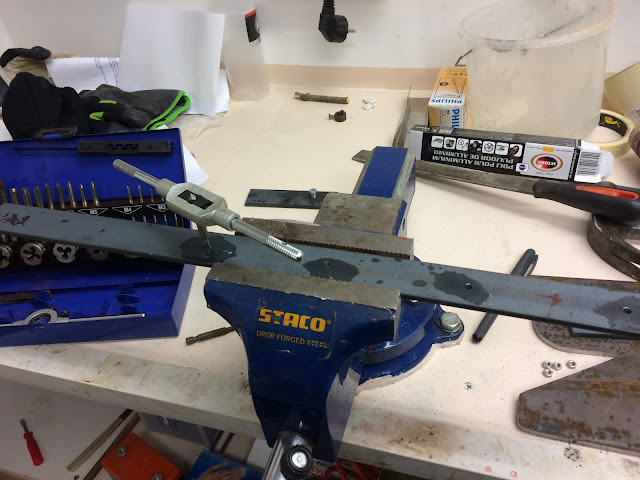I started by cutting the bar in correct length (600 mm).
Next step was to shape the blade. The instructions state that blade should have a curve of 2 mm on a length of 400 mm measured from below the bolt of runner. I achieve this by taking of material of the blades with a belt sander with 40 grit sand paper.
Both runners were shaped at the same time.
Every now and then I checked the measures until I was satisfied.
I made a small deviation from building instructions by leaving a 10 cm part straight below where the fastening bolt will come on the blade. This is how I know some of the DN sailors shape their runners when they sharpen them! Also good to point out here is that I'm only shaping the curve of the blade to desired shape now. The blade still has to be sharpened before it is ready.
Stiffeners. These are there for strengthening the blade in side ways. If and when the boat tips up on two runners during sailing due to strong winds, the sideways force on forward part of the rear runner still on the ice might become so big that it bends the blade if no stiffeners are used.
I'm using a bolt joint to fasten the stiffeners. Here I'm making M5 threads in one of the stiffeners and the other side will have counter sunk bolt head.
Like this!
Assembled.
The rear runners are now ready for sharpening. That will however be explained in a separate post later on!










